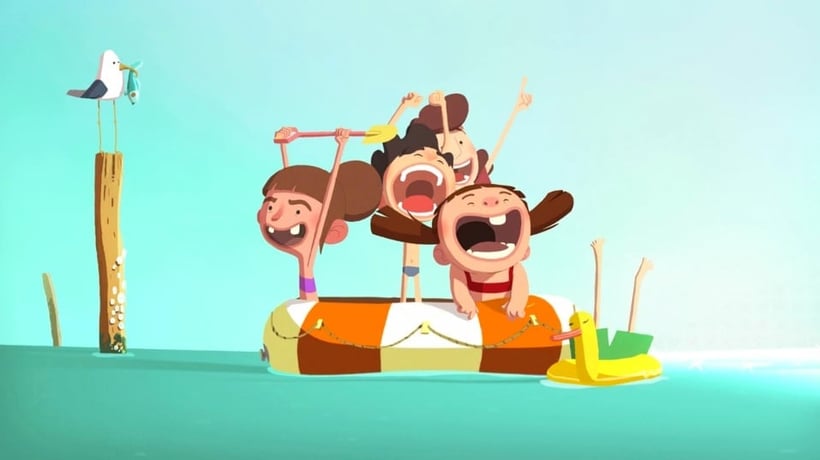
Metamorphosis - Buck's talent in one animation
Prepare to take a visual slap. To mark the release of his new website, Buck has put forward one of their latest productions:...

For about ten years now, 3D animation has taken over traditional — or semi-traditional — animation. Take cartoons, for example: most of them are now made in 3D, and often not very pretty... It’s faster, cheaper to produce, and unfortunately, that’s what wins in an audiovisual market struggling to stay profitable. Episodes are produced on an assembly line, and a 3D-modeled character takes far less time to animate.
3D is everywhere — in every form. I’m not talking about full 3D animated films, but rather the basic 3D used in advertising, TV branding, music videos — in short, the world of motion design. It’s never been easier to do 3D, especially with the growing accessibility of professional software like Cinema 4D and its countless tutorials. Just look at YouTube, where thousands of teenagers post exploding 3D logos to illustrate their gaming sessions.
It’s a logical evolution! Five years ago, young people were pirating Photoshop and quickly learning the basics through written tutorials on psdtuts. Two years ago, After Effects became the must-learn tool to impress friends, as video became the main medium of sharing. And today, it’s 3D’s turn.
These three industries — once reserved for professional elites — are now open to everyone.
There are, of course, pros and cons. Knowledge is easily accessible, and young people can learn quickly at low cost. I think that’s amazing — it’s what allowed me to get where I am today.
The downsides, however, bring us to the main topic: the loss of value in simple 3D animations. A fracturing 3D logo, for example, is now worthless and truly overused. Simple physics simulations too. Just a few years ago, those effects were impressive — when only big studios had the skills to produce them. But times change, and so do techniques.
So how can we judge a good animation today? By its actual animation. The kind created through true manual keyframing, or frame-by-frame drawing. The kind that can’t be generated by pressing a button or using the latest trendy plugin.
These animations stand out and have value because they require real craftsmanship — not everyone can be an animator. In an age where everyone wants instant results, it feels good to take time and focus on quality work. Because that takes time — a lot of time!
Of course, that’s often the problem — not every project can afford it...
The best compromise is likely the one most studios follow: take advantage of the easy animation tools provided by 3D software while keeping a style close to 2D animation — or even mixing both.
Modules like Cinema 4D’s Sketch’n’Toon can help achieve a drawn look on a 3D render, for example. This allows for quick animation while maintaining a warm, handcrafted visual feel.
Then, semi-traditional animations are layered on top — “semi” because they’re usually created with digital tools, not paint on cels like Walt used to do. But the principle remains the same: time and talent.
Whether done in After Effects, Photoshop, Flash, TV Paint, or others, the result speaks for itself. The animation feels alive, free from constraints, with imperfections — and that’s exactly what gives it its charm.

It’s very likely that 2D animation will reclaim a stronger place in the motion design world in the coming months — and that can only be a good thing! As for me, I’ll be doing some research and practice, and maybe soon I’ll start making tutorials on this type of animation (even though it’s a delicate topic — most of the work lies in drawing, graphic design, and art direction rather than technique). In any case, I find it fascinating, and I hope you’ll also take an interest in it. ;)
I am the Founder of Mattrunks. I work as Creative Director and Motion Designer in my studio. I also create video tutorials to share my passion of motion.
Newsletter
© 2007-2025 Mattrunks – Developed by Grafikart